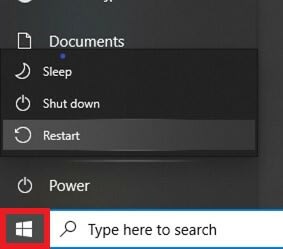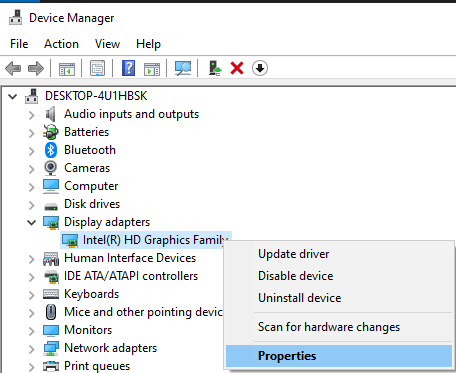What is system thread exception not handled?
we get a blue screen in the case of SYSTEM_THREAD_EXCEPTION_NOT_HANDLED. This blue screen error called Blue Screen of Death (BSOD) is faced by a Windows operating system’s user when drivers that are using current windows are corrupted or incompatible with it. This thread displays that exception cannot be handled by the system and the owner need to resolve this issue.
How does this error affect your PC?
It stuck your PC on a continuous restarting loop. It may cause mostly due to a corrupted graphic driver and display of a blank screen.
Why BSOD error occurs?
It is scary to get this error on your Screen. It is mostly associated with graphic drivers when the installed driver is incompatible with the windows that are currently used in your machine. This error also occurs due to faulty corrupted drivers in your PC or caused by the wrong installation or missing or outdated drivers.
If you get the name of error exception handling, then it is easy for you to resolve it. Such as you get nvlddmkm.sys error. This is Nvidia graphic card driver error that the system cannot handle by itself, and you need to repair it.
Below are some of the errors that are the reason for BSOD.
- nvlddmkm.sys : NVIDIA graphics driver
- igdkmd64.sys : Intel graphics driver
- atkimpag.sys : AMD graphics driver
- hidclass.sys : Mouse or keyboard driver
- acpi.sys : Windows ACPI driver
- rtkvhd64.sys : Realtek audio driver
- syntp.sys : Synaptics Touchpad driver
- tcpip.sys : Network card driver
- usbxhci.sys : USB driver
corrupted driver indication on your blue screen, you can fix it directly. Otherwise, you will first detect the corrupted driver and then fix it manually
It stuck your PC on a continuous restarting loop. This may cause your computer to have a restart after 30 seconds in loops. If your computer fully boots before prompting, then set your computer to safe mode by following the steps
Let boot windows into safe mode and then perform the solution
- Click on the window icon and click on the power button. Press and hold the shift key before clicking restart.
Hold the shift key till restart your pc with this screen. Select step by step as below screenshot.
Press the F5 key to start your PC into safe mode with the network.
Try this method if your PC is half booting.
If your computer is half booting, press the power button for 10 seconds until it is completely turned off, turn on your PC, and then show the manufacturing company logo (such as Dell/hp) press and hold the power button again for 10 seconds until the system offs. Turn on again and repeat this process till your PC is turned on in safe mode.
Another way to boot into safe mode is to use the bootable Flash drive that will open the installation window, choose the Repair option, and then follow the above method as Troubleshoot> Advanced Option > Startup Settings >Restart > F5.
In safe mode, the computer limits your access, and you cannot use the internet or external devices.
After switching into safe mode, detect which driver is damaged.
Press window key + R that will open a box, write the “eventvwr” command in that dialogue box, and press enter. This will open Event viewer, select Windows logs from the left pane, and select System from the drop-down menu. This will show all events and you can detect which driver is showing the SYSTEM_THREAD_EXCEPTION_NOT_HANDLED error.
After getting the name of the system exception error, try to repair it by using the following methods.
Method 1: Update Drivers.
Suppose you are getting an error due to your graphic card.
Open Device Manager.
Select and update the corrupted driver.

Select Browse my computer for drivers.
Select the Let me pick from a list option.
Select the graphic card driver that is used on your PC. I’m choosing the Intel Graphic card family that is compatible with my PC.

Click next and start installing the driver on your PC. This process will take a few minutes to complete.
Method2: uninstall and reinstall the driver
First, you must know which driver has corrupted and the driver's details. Download corrupted drivers when you are using the internet on a normal screen because you cannot download in safe mode.
After uninstalling, download an updated version of the driver from the internet. You can download the driver by using the product name and number that is compatible with your device.
Install driver on safe mode
Method 3: Roll Back Drivers
If your driver is corrupted due to a new update, roll back will set your driver on the backdate when it was working fine.
To roll back your driver open Device Manager> Display adapter> Properties> Driver tab.
Select roll back to the previous date.
Note: If the roll back option is greyed out, it means there is no previous driver recovery, and you cannot Roll Back your Driver.
Method 4: Repair corrupted files by using Deployment Image Servicing and Management (DISM) commands
Run power shell as an administrator and execute the following commands. These commands will take more time so be patient and run the next command when the previous is completed successfully.
This command scans the system and replaces corrupted files if they are present.
sfc /scannow
This command checks out whether the system can repair the damaged files or not.
DISM /Online /Cleanup-Image /CheckHealth
It scans the system for any damage.
DISM /Online /Cleanup-Image /ScanHealth
It repairs the Operating System that is running currently.
DISM /Online /Cleanup-Image /RestoreHealth
Method 5: Update your windows 10.
You can only update your windows when you are on a normal screen. On safe mode, you cannot update windows.
Click on settings > update and security. Check if there is any update available for your windows and update your PC.
Method 6: Reset Windows 10
This method will reset your windows without losing data. It set all the settings as default and makes windows fresh.
From the windows icon, select settings >Update and Security > Recovery > Get started > Keep my Files > Reset.
This procedure will take a while and repair all the damage that is taking place to windows.
Conclusion
In this article, we have tried to solve the issue SYSTEM_THREAD_EXCEPTION_NOT_HANDLED which shows a blue screen of death (BSOD). It is difficult to handle if you are unaware of how to perform basic settings in windows. But this article helps you step by step to solve this issue easily if you are not an expert. Six different methods will probably solve this issue.




























Top comments (0)